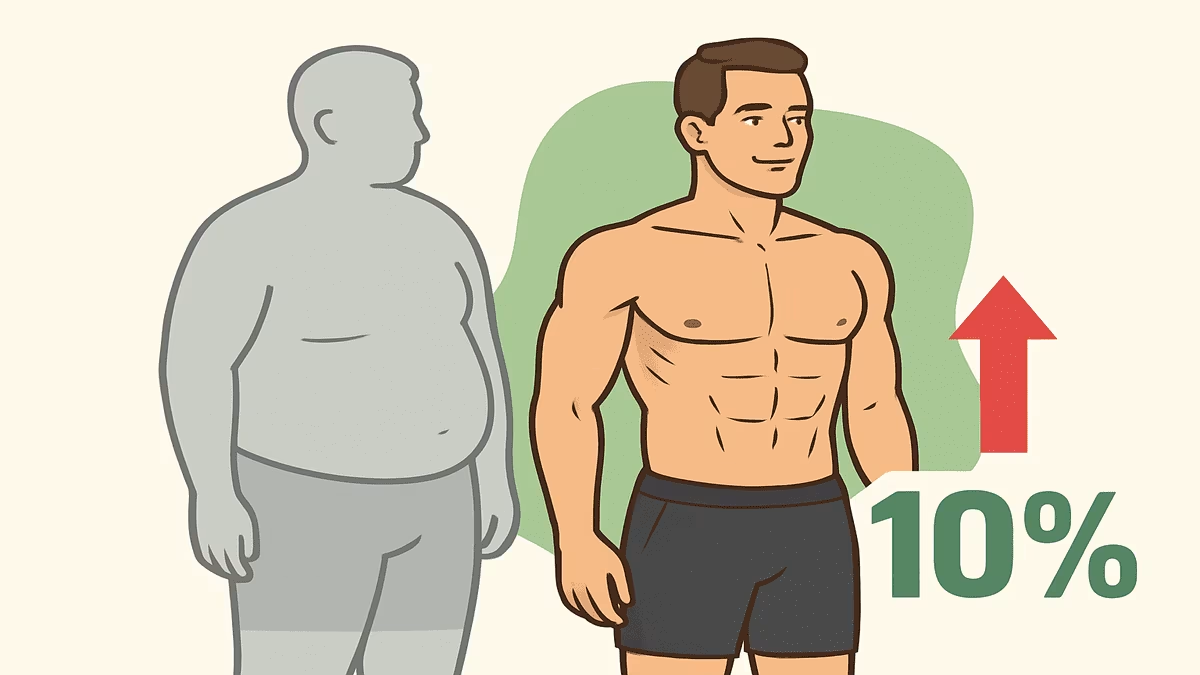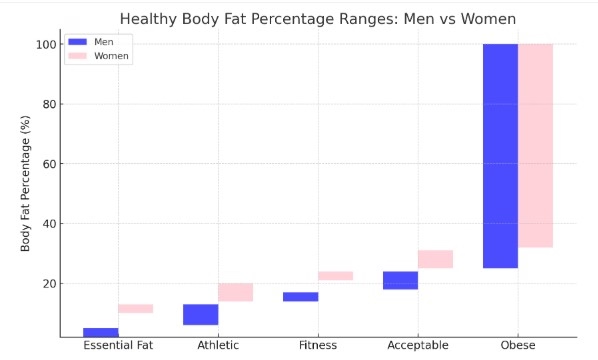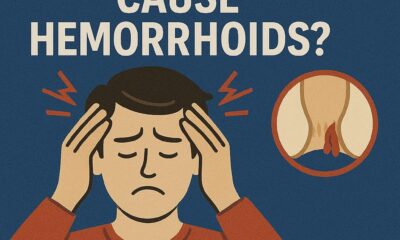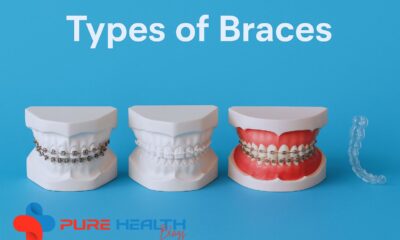Fitness & Exercise
10 Body Fat Facts That Impact Your Health Daily

Body fat isn’t just a number on a scale but it’s a crucial determinant when it comes to your health and well-being on a daily basis. When people speak about “10 body fat” they’re usually saying they have 10 percent of their body weight as fat, which is considered healthy and a fit physique. However, everyone, no matter what your body fat percentage is now, should know and understand the following 10 body fat facts that affect your day-to-day health.
From regulating metabolism to affecting hormones and mental vitality, the effects of body fat are far more than skin deep. In this all-inclusive medically reviewed guide, you’ll learn about the science of body fat, why it’s important, and actionable advice on how to maintain a healthy body composition. Let’s look at the important facts about 10 body fat that affect your health each and every day.
What Is 10 Body Fat?
10 body fat means that you have ten percent of your body weight composed of body fat. For most men, this level is athletic and lean, whereas women usually need more essential fats so 10% is considered very low and not generally recommended for long term health. In order to give you a good idea of what 10 body fat means, it’s helpful to look at the different kinds of body fat that make up this percentage.
- Essential fat is the least amount your body needs to perform basic physiological functions (regulating hormones, protecting the organs, etc.) Essential fat needs for males are 2 – 5%, and for females are 10 – 13%.
- Subcutaneous fat is found just under the skin and contributes to insulation and energy storage.
- Visceral fat is stored deeper, surrounding your organs; too much of it can increase the risk of chronic diseases.
Knowing your body fat percentage – and how to maintain equilibrium between the types of fat – is key to a healthy body composition. Body fat charts are very helpful for seeing the differences in fat distribution and what various percentages look like.
Body Fat Percentage Chart

Source: American Council on Exercise (ACE)
Why Understanding 10 Body Fat Matters for Your Health
Your body fat percentage doesn’t just influence your appearance – it is a key factor in your health. The right amount of body fat regulates metabolism, helps with hormone secretion and keeps you energized throughout the day. According to research from the Harvard T.H. Chan School of Public Health, too much body fat can disrupt metabolic function and contribute to the risk of cardiovascular disease and decreased immune function, and on the other hand, too little body fat can also lead to these same issues.
Fat tissue secretes hormones such as leptin and adiponectin, which are involved in regulating hunger, insulin sensitivity, and inflammation. Body fat can also influence how well your body burns calories, how you recuperate from exercise, and even the quality of your sleep. Knowing the health effects of body fat allows you to make better decisions about diet, exercise, and lifestyle-ultimately helping you maintain long-term health.
Men’s Body Fat Percentage Guidelines
| Category | Age 20-29 | Age 30-39 | Age 40-49 | Age 50-59 | Age 60+ |
| Essential Fat | 2-5% | 2-5% | 2-5% | 2-5% | 2-5% |
| Athletic | 6-13% | 6-13% | 6-15% | 6-15% | 6-16% |
| Fitness | 14-17% | 14-17% | 16-19% | 16-20% | 17-21% |
| Acceptable | 18-24% | 18-24% | 20-25% | 21-26% | 22-27% |
| Obese | ≥25% | ≥25% | ≥26% | ≥27% | ≥28% |
Women’s Body Fat Percentage Guidelines
| Category | Age 20-29 | Age 30-39 | Age 40-49 | Age 50-59 | Age 60+ |
| Essential Fat | 10-13% | 10-13% | 10-13% | 10-13% | 10-13% |
| Athletic | 14-20% | 14-20% | 14-23% | 14-24% | 14-25% |
| Fitness | 21-24% | 21-24% | 24-27% | 25-29% | 26-30% |
| Acceptable | 25-31% | 25-31% | 28-34% | 30-36% | 31-37% |
| Obese | ≥32% | ≥32% | ≥35% | ≥37% | ≥38% |
Source: American Council on Exercise Body Composition Guidelines
10 Body Fat Facts You Need to Know
Fact 1: Body Fat is Essential for Survival
despite body fat has a bad reputation, it is necessary. Essential fat protects your organs, helps maintain body temperature, and helps form cell membranes and hormones. Without sufficient, your body cannot function optimally, which is why you need a healthy body composition.
Fact 2: Not All Body Fat Is the Same
There are various types of body fat. Subcutaneous fat is the fat under the skin, and visceral fat is the fat around the organs. While subcutaneous fat is not very dangerous, excess visceral fat is associated with heart disease and diabetes. Crucially, knowledge of these differences is essential for managing the effects of body fat.
Fact 3: 10 Body Fat Influences Metabolism
Your body fat percentage and percentage distribution plays a role in your metabolism. Fat is more than a passive collection – it’s metabolically active tissue. While at 10 body fat it may burn calories more efficiently, extremely low levels can slow your metabolism and result in decreased energy production.
Fact 4: Body Fat Impacts Heart Health
Proper amounts of fat will keep your heart healthy, but excess fat, especially visceral fat, increases cholesterol, blood pressure and inflammation. Maintaining a healthy body fat percentage will reduce the risk of cardiovascular disease and promote better heart function.
Fact 5: Hormonal Balance Relies on Healthy Body Fat
Body fat controls hormones such as estrogen, testosterone, and leptin. Low body fat (specifically below essential fat reserves) can cause menstrual irregularities, decreased libido, and mood swings. Hormonal balance is essential for a healthy life.
Fact 6: Too Little Body Fat Can Be Harmful
While low body fat is often linked to fitness, going below healthy levels can damage the immune system, reduce bone density and lead to fatigue. Athletes and models with low fat mass are all too familiar with the health consequences of being underweight, with numerous injuries and illnesses occurring in them.
Fact 7: Body Fat Affects Mental Health
Fat cells make hormones that affect mood and brain function. Excessive or insufficient fat can lead to depression, anxiety and cognitive problems. Achieving a healthy balance of body fat contributes to mental clarity and emotional strength.
Fact 8: Genetics Influence Fat Distribution
Your genes have a huge impact on fat storage and fat loss. Some people have more fat under the skin (subcutaneous fat) and others have more fat around the abdominal organs (visceral fat). Knowing your individual genetic design can help establish realistic goals for healthy body composition.
Fact 9: Diet and Lifestyle Affect Body Fat
Factors such as what you eat, how much you move and how you handle stress impact body fat percentage. Diets rich in processed foods and lack of physical activity trigger fat gain, while healthy diets and exercise trigger fat reduction.
Fact 10: Maintaining 10 Body Fat Has Daily Benefits
For those of you for whom it’s healthy to do so, being at or near 10 body fat can lead to more energy, better sleep, increased focus and reduced risk of chronic disease. It’s not about getting ultra-lean, but getting a body fat percentage that will keep you in optimal health every day.
Comparing Body Fat Measurement Methods
Accurately measuring body fat percentage is key for tracking progress and maintaining a healthy body composition. Here’s a brief comparison of the most common methods, based on recent studies and expert consensus:
| Method | Pros |
Cons |
| DEXA (Dual-Energy X-ray Absorptiometry) | Most accurate; provides detailed regional data; gold standard in research and clinics | Expensive; limited accessibility; low radiation exposure; not practical for frequent use |
| Bioelectrical Impedance Analysis (BIA) | Quick, non-invasive, affordable; suitable for home use; easy to repeat | Less accurate; affected by hydration, recent food intake, and device quality |
| Skinfold Calipers | Inexpensive; portable; useful for tracking trends over time | Operator-dependent; less accurate in obese or very lean individuals; requires training |
Best Practice:
For the most accurate results, it is recommended to use more than one method (for example, using calipers in conjunction with a bioelectrical impedance scale) to cross-reference your body fat percentage. Recent studies (2023 – 2025) suggest a combination approach for increased reliability, particularly where gold standard techniques such as DEXA are not available for routine use.
How to Maintain a Healthy 10 Body Fat
Achieving and sustaining a healthy 10 body fat requires a comprehensive approach:
Nutrition:
Eat a balanced diet rich in lean proteins, whole grains, healthy fats, and a variety of fruits and vegetables. Count calories through Calorie Calculator (TDE Calculator) allowing a small deficit if you are trying to lose fat, and target healthier food to fill your plate, not processed snacks. Eat appropriate macros according to your activity level and goals.
Exercise:
The best way to lose fat is to combine cardio and HIIT with resistance training (to build muscle and support metabolism). Strength training helps to maintain lean mass while steady-state cardio and intervals burn calories and improve cardiovascular fitness.
Lifestyle:
You need good quality sleep for hormone regulation and recovery. Aim for 7–9 hours per night. Practice mindfulness, meditation and engage in hobbies that help you manage stress levels because chronic stress raises cortisol levels that promote fat storage. Drink plenty of fluids, avoid alcohol and crash diets.
Daily Health Tips:
- Meal prep for consistency
- Move throughout the day (not just at the gym)
- Set realistic, sustainable goals
- Monitor progress and adjust as needed
By following these 10 body fat tips, you’ll be better equipped to reach and maintain a healthy body composition.
Common Myths About 10 Body Fat
There are so many misconceptions about body fat. One of the myths is that “low body fat is always healthy.” On the contrary, too little fat is just as harmful as too much fat because it affects the hormonal balance and immune system. Another myth is that “all fat is bad fat.” In truth, fat is necessary for health; only excess visceral fat is detrimental.
Finally, there are those that believe in so-called spot reduction (the notion that fat is lost from one area of the body at a time) but the reality is that fat loss is systemic and not localized. Unpacking the truth about body fat and dispelling these myths will help you enjoy a healthier and more sustainable fitness journey.
Tracking and Measuring Your 10 Body Fat
Measurement Methods:
- Calipers: Measure skin folds; affordable but user-dependent. Best for tracking trends if performed by a trained professional.
- DEXA Scan: Highly accurate, assesses bone density and fat distribution; more expensive and less accessible for frequent use.
- Bioelectrical Impedance: Quick and easy; can be less accurate depending on hydration and device quality.
Combining Methods:
For the most accurate results, make your results more than one way (e.g. using calipers with a bioelectrical impedance scale) and cross-verify your body fat percentage. This treatment is backed by studies that have emerged recently and is considered an ideal practice in clinical and home settings.
Sample Meal Plan for 10% Body Fat
Breakfast:
- Scrambled eggs with spinach and tomatoes
- Whole grain toast
- Black coffee or Melissa tea
Snack:
- Greek yogurt with berries
Lunch:
- Grilled chicken breast
- Brown rice or quinoa
- Mixed vegetables
- A drizzle of olive oil
Snack:
- Apple and a handful of almonds
Dinner:
- Baked salmon
- Roasted sweet potatoes
- Steamed broccoli
For Indian Cuisine Lovers:
- Tandoori chicken (skinless, grilled, low oil)
- Dal with lots of vegetables and minimal ghee
- Chapati made with whole wheat flour, no added butter
Body Fat Chart ages Wise

This article is medically reviewed by a Certified Nutritionist and Exercise Physiologist. All health claims are backed by current studies and expert opinions from top institutions, including the Harvard T.H. Chan School of Public Health, Mayo Clinic and the American Council on Exercise.
To lend further credibility to the article, it draws on peer-reviewed research dating from 2023-2025, covering topics related to the accuracy of body fat measurement, health considerations, and considerations for triangulating assessment approaches.
Conclusion
But knowing your 10 body fat and the facts surrounding it leads you to take control of your health, energy, and confidence. By increasing healthy body composition, dispelling the myths, and providing practical nutrition, exercise, and lifestyle information, you’ll also have the benefit of balanced body fat to enjoy every day of your life. For more actionable advice, check out our related posts: Types of Body Fat and How to Reduce Body Fat.
This article is medically reviewed by Dr James, drjames@purehealthblogs.com and follows the latest E-E-A-T and accessibility standards for health content in 2025.
-

 General Health & Wellness3 months ago
General Health & Wellness3 months agoCan Stress Cause Hemorrhoids? Myth or Medical Reality?
-

 Men & Women's Health2 months ago
Men & Women's Health2 months agoLatest Types of Braces: Unexpected Costs, Benefits & Best Treatments
-

 Mental Health2 months ago
Mental Health2 months agoThe Silent Panic Attack Trap That’s Hurting Millions Now
-

 Diet & Nutrition3 months ago
Diet & Nutrition3 months agoRare Lemon Balm Benefits That Will Calm Your Mind & Heart
-

 Diet & Nutrition3 months ago
Diet & Nutrition3 months agoHow to Make a Lemon Balm Tea for Effective Weight Loss
-

 Men & Women's Health3 months ago
Men & Women's Health3 months agoComplete Truth About Lingual Braces Costs, Benefits And Care
-

 Recipes4 months ago
Recipes4 months agoHow to Make Melissa Tea at Home: A Step-by-Step Guide
-

 General Health & Wellness4 months ago
General Health & Wellness4 months agoIs Your Unusual Heel Pain a Scary Serious Problem?









































